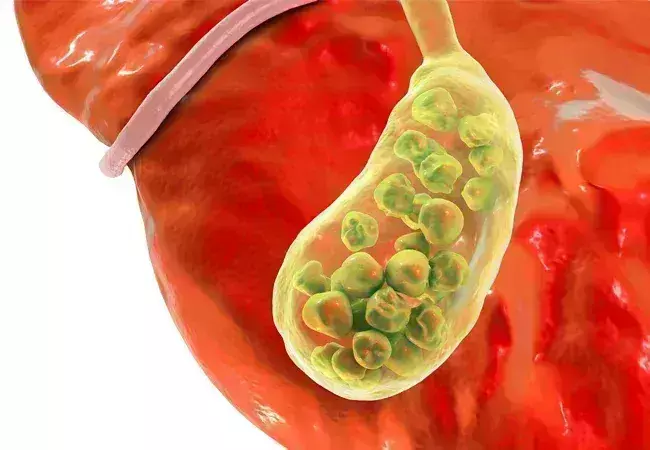- Home
- Medical news & Guidelines
- Anesthesiology
- Cardiology and CTVS
- Critical Care
- Dentistry
- Dermatology
- Diabetes and Endocrinology
- ENT
- Gastroenterology
- Medicine
- Nephrology
- Neurology
- Obstretics-Gynaecology
- Oncology
- Ophthalmology
- Orthopaedics
- Pediatrics-Neonatology
- Psychiatry
- Pulmonology
- Radiology
- Surgery
- Urology
- Laboratory Medicine
- Diet
- Nursing
- Paramedical
- Physiotherapy
- Health news
- Fact Check
- Bone Health Fact Check
- Brain Health Fact Check
- Cancer Related Fact Check
- Child Care Fact Check
- Dental and oral health fact check
- Diabetes and metabolic health fact check
- Diet and Nutrition Fact Check
- Eye and ENT Care Fact Check
- Fitness fact check
- Gut health fact check
- Heart health fact check
- Kidney health fact check
- Medical education fact check
- Men's health fact check
- Respiratory fact check
- Skin and hair care fact check
- Vaccine and Immunization fact check
- Women's health fact check
- AYUSH
- State News
- Andaman and Nicobar Islands
- Andhra Pradesh
- Arunachal Pradesh
- Assam
- Bihar
- Chandigarh
- Chattisgarh
- Dadra and Nagar Haveli
- Daman and Diu
- Delhi
- Goa
- Gujarat
- Haryana
- Himachal Pradesh
- Jammu & Kashmir
- Jharkhand
- Karnataka
- Kerala
- Ladakh
- Lakshadweep
- Madhya Pradesh
- Maharashtra
- Manipur
- Meghalaya
- Mizoram
- Nagaland
- Odisha
- Puducherry
- Punjab
- Rajasthan
- Sikkim
- Tamil Nadu
- Telangana
- Tripura
- Uttar Pradesh
- Uttrakhand
- West Bengal
- Medical Education
- Industry
Study Observes Strong Link Between Gallstones and Body Roundness Index

A new study published in the BMC Gastroenterology revealed significant association between gallstones and the Body Roundness Index (BRI) which is a recently developed obesity measure that more accurately reflects body fat and visceral fat levels when compared to the traditional Body Mass Index (BMI). This study utilized data from the National Health and Nutrition Examination Survey (NHANES) from 2017 to 2020 to explore the relationship between BRI and gallstone prevalence.
The cross-sectional study analyzed data from 5,297 participants who were of 20 years and older. Of these, a total of 575 individuals were found to have gallstones. To determine the association between BRI and gallstones, the research employed logistic regression analysis, subgroup analysis and interaction terms. They also used restricted cubic spline (RCS) analysis and threshold effects analysis to identify nonlinear relationships. The study compared the predictive abilities of BRI and BMI in identifying gallstones using receiver operating curve (ROC) analysis and the area under the curve (AUC) with statistical comparisons made via the Delong test.
The results of this study revealed a robust positive association between BRI and gallstone prevalence. The participants in the highest quartile of BRI were found to have a 204% increased risk of developing gallstones when compared to the individuals in the lowest quartile. The odds ratio (OR) for this association was 3.04 (95% CI: 2.19–4.22, P < 0.0001). Even after adjusting for various confounding factors, the positive correlation between BRI and gallstones remained significant with an overall OR of 1.16 (95% CI: 1.12–1.20, P < 0.0001).
The study also identified a nonlinear relationship between BRI and gallstones through RCS analysis which pointed an inflection point at a BRI value of 3.96. This indicated that the relationship between BRI and gallstone risk varies before and after this threshold. The subgroup analyses confirmed the persistence of this association across different population segments.
After comparing the effectiveness of both BRI and BMI as predictors of gallstones, this study found that BRI was a stronger predictor. The ROC analysis yielded an AUC of 0.667 for BRI when compared to an AUC of 0.634 for BMI by demonstrating that BRI is a more reliable measure for predicting gallstone risk. The findings suggest that maintaining an appropriate BRI could be critical in reducing the incidence of gallstones. Given the stronger predictive power of BRI over BMI, clinicians might consider incorporating BRI into routine assessments to better identify individuals at risk of gallstones.
Source:
Wei, C., & Zhang, G. (2024). Association between body roundness index (BRI) and gallstones: results of the 2017–2020 national health and nutrition examination survey (NHANES). In BMC Gastroenterology (Vol. 24, Issue 1). Springer Science and Business Media LLC. https://doi.org/10.1186/s12876-024-03280-1
Neuroscience Masters graduate
Jacinthlyn Sylvia, a Neuroscience Master's graduate from Chennai has worked extensively in deciphering the neurobiology of cognition and motor control in aging. She also has spread-out exposure to Neurosurgery from her Bachelor’s. She is currently involved in active Neuro-Oncology research. She is an upcoming neuroscientist with a fiery passion for writing. Her news cover at Medical Dialogues feature recent discoveries and updates from the healthcare and biomedical research fields. She can be reached at editorial@medicaldialogues.in
Dr Kamal Kant Kohli-MBBS, DTCD- a chest specialist with more than 30 years of practice and a flair for writing clinical articles, Dr Kamal Kant Kohli joined Medical Dialogues as a Chief Editor of Medical News. Besides writing articles, as an editor, he proofreads and verifies all the medical content published on Medical Dialogues including those coming from journals, studies,medical conferences,guidelines etc. Email: drkohli@medicaldialogues.in. Contact no. 011-43720751


